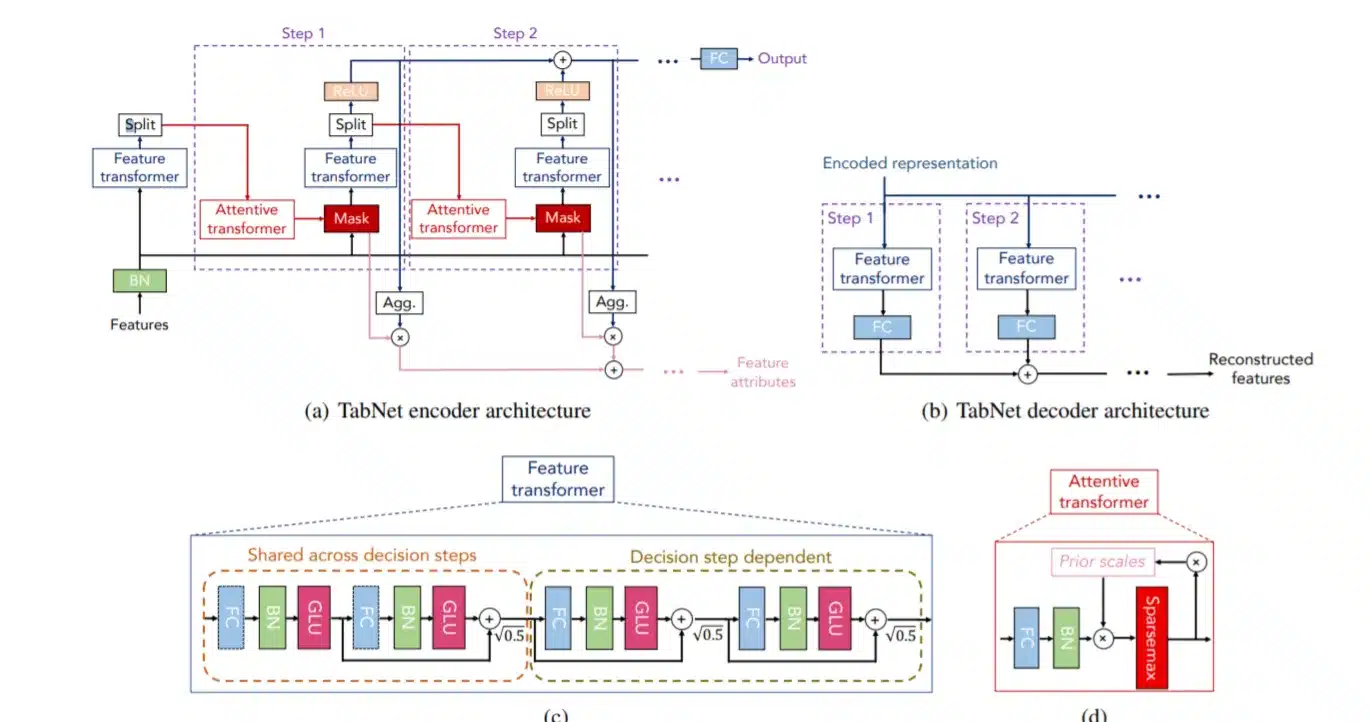Brief information about TabNet
TabNet is a deep learning model designed specifically for handling tabular data. Unlike conventional models that might struggle with high-dimensional data or categorical variables, TabNet is constructed to efficiently manage tabular structures. It provides an elegant solution for predictive analysis on structured data, allowing more nuanced decision-making.
The History of the Origin of TabNet and the First Mention of It
TabNet was introduced by researchers at Cloud AI from Google Cloud in 2020. Recognizing the lack of specialized models for handling tabular data, the team set out to create a deep learning architecture that could efficiently process this type of data. TabNet is one of the first models to successfully utilize the strength of deep neural networks in tabular data processing.
Detailed Information about TabNet: Expanding the Topic
TabNet combines the best of two worlds: the interpretability of decision trees and the representational power of deep neural networks. Unlike other deep learning models, TabNet utilizes decision rules and sequential decision-making, which enable it to perform efficiently on tabular data. The model is pre-trained on a large dataset, allowing it to generalize well to various types of tabular structures.
The Internal Structure of TabNet: How TabNet Works

The internal structure of TabNet can be broken down into key components:
- Sparse Attention Mechanism: TabNet uses an attention mechanism to make decisions at each step, selectively focusing on different features. This mechanism enables the model to handle high-dimensional data.
- Decision Making Process: TabNet utilizes sequential decision-making, taking one decision at a time and basing subsequent decisions on the previous ones. This resembles how decision trees work.
- Feature Transformer: This component learns feature importance and interactions, enabling a more robust interpretation of the data.
- Aggregated Encoder: Combining the information gathered, this layer forms a comprehensive representation of the data for predictive analysis.
Analysis of the Key Features of TabNet
Some of the key features of TabNet include:
- Interpretability: The model is designed to be easily interpretable, with decision explanations similar to those of decision trees.
- Efficiency: TabNet provides a highly efficient way to process large datasets with minimal computational resources.
- Scalability: It can scale to handle various sizes and types of tabular data.
Types of TabNet: Using Tables and Lists
There are different variations of TabNet based on its implementation and use cases. Below is a table summarizing the types:
| Type | Description |
|---|---|
| Standard | General-purpose TabNet for a wide range of tabular data |
| Multitask | Designed for multi-task learning, handling multiple objectives |
| Embedding | Uses embeddings for handling categorical variables |
Ways to Use TabNet, Problems, and Their Solutions
TabNet can be employed in various domains such as finance, healthcare, marketing, and more. Despite its versatility, challenges might arise:
- Overfitting: If not carefully regularized, TabNet might overfit to the training data.
- Complexity: Some implementations might require fine-tuning.
Solutions include proper validation techniques, regularization, and utilizing pre-trained models.
Main Characteristics and Other Comparisons
Comparing TabNet to traditional models:
- Versus Decision Trees: TabNet offers the interpretability of decision trees with higher flexibility.
- Versus Neural Networks: While standard neural networks might struggle with tabular data, TabNet is specialized in handling it.
Perspectives and Technologies of the Future Related to TabNet
As data continues to evolve, TabNet’s application might expand to areas like real-time analytics, edge computing, and integration with other deep learning architectures.
How Proxy Servers Can Be Used or Associated with TabNet
Proxy servers like those provided by OneProxy can facilitate the process of data gathering for training TabNet models. By enabling secure and anonymous access to diverse data sources, OneProxy can aid in developing more robust and adaptable TabNet models.
Related Links
By leveraging TabNet and resources like OneProxy, organizations can unlock new potentials in predictive analytics and data-driven decision-making.




